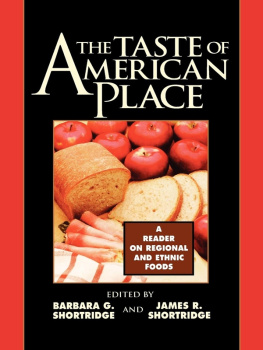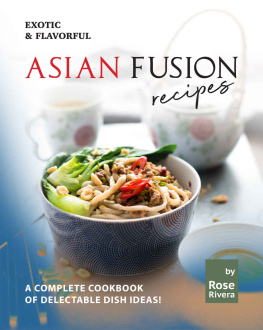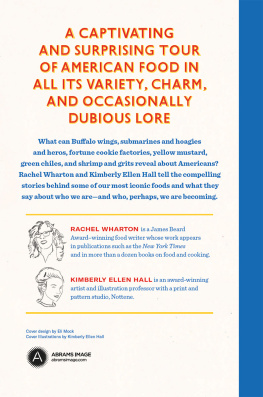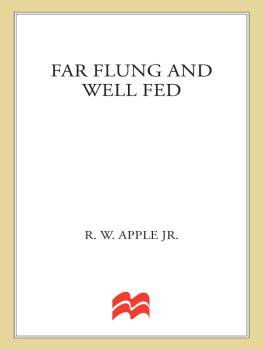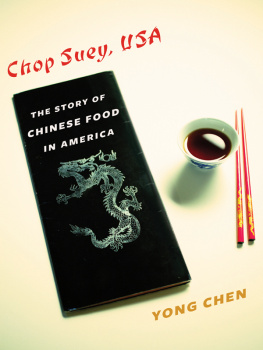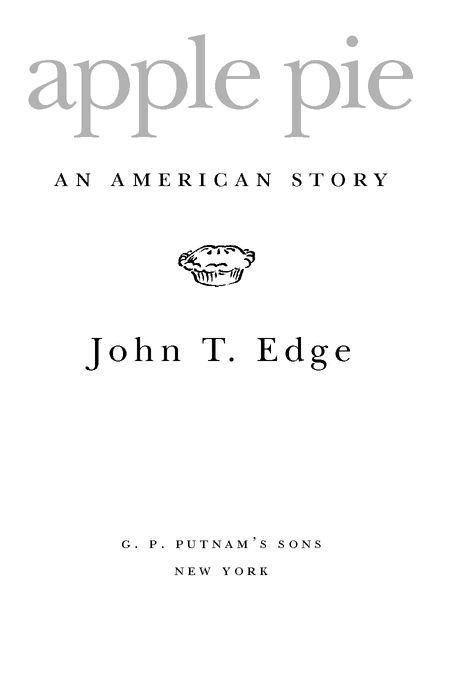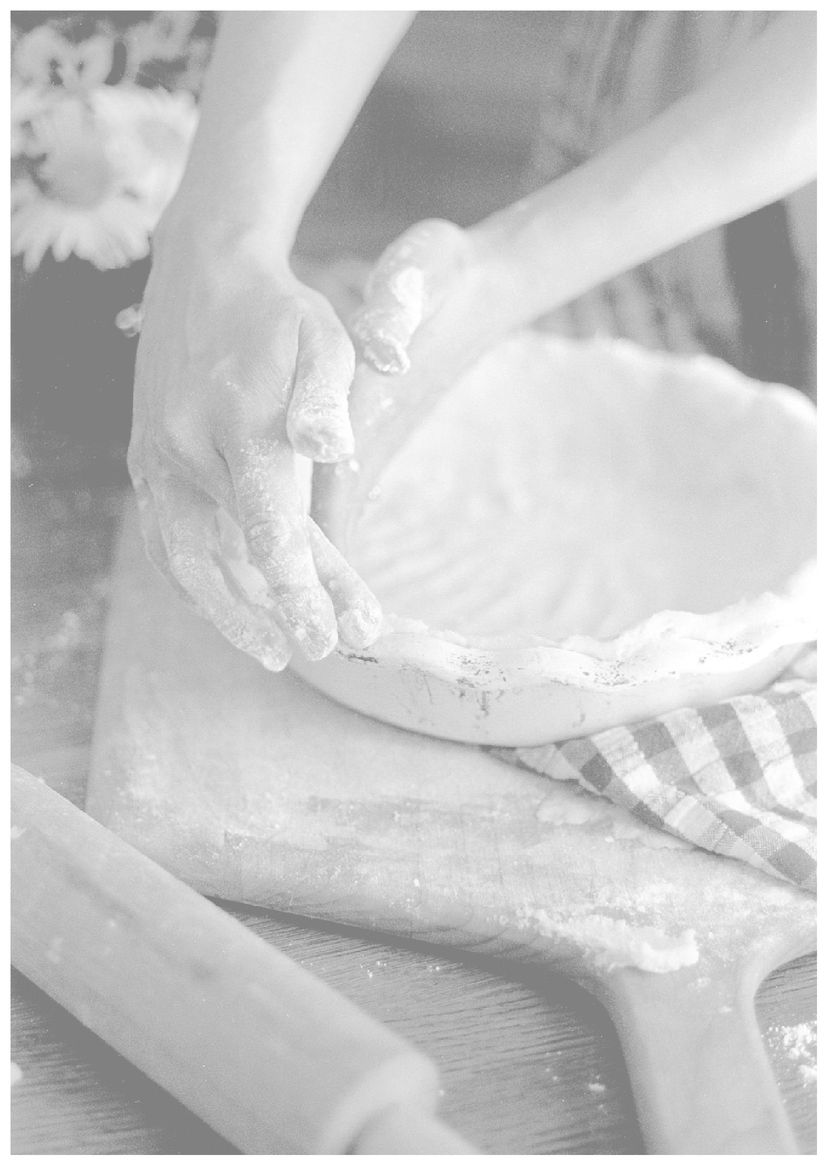Table of Contents
WITH LOVE FOR BLAIR, A NONPAREIL BAKER
AND THE MOST GENEROUS SOUL I KNOW
if I were to create a coat of arms for our country, a pie would be its heraldic symbol.
attributed to the figment known as Betty Crocker
Series Introduction
This is the second in a series of books that celebrates Americas iconic foods. Fried chicken led off. Hamburgers & French fries will come next. Then donuts. To my mind, these are small-d democratic foods that conjure our collective childhood and evoke the question once posed by a Chinese philosopher: What is patriotism but nostalgia for the foods of our youth?
I chose these foods because they transcend interre gional variation and internecine debate over origins. Recognized from the Atlantic to the Pacific as uniquely American, they evoke the culinary and cultural fabric of our nation.
Though the places profiled and the recipes detailed can be read as keys to eating well here in the States, my intent was not to compile a list of the countrys top bakers. Instead, please consider this to be my pilgrimage in search of Americas gastronomic grail. In this book and the others that accompany it, I strive to introduce you to people and foods that make up a true American banquet.
INTRODUCTION
In Pie We Trust
writing about apple pie is a lazy mans pursuit. Rhapsodize about flaky crust and crisp yet unctuous apples, and before you know it youre halfway home. The rest comes naturally: Sketch scenes of pies cooling on windowsills. Stage a few Fourth of July interviews with pie-loving, baby-kissing politicians. Then trot out mom and cue the Don McLean album.
Cynical? Admittedly. Truthful? To a certain extent. Ive read something like sixteen pie books over the course of the past year. Memoirs, travel quests, cookbooks with pretensions: no matter their guise, far too many were all meringue, no filling. And I cant count how many newspaper and magazine articles Ive perused wherein the author does nothing more than append his or her personal experience to a press release from the National Pie Council. (More on that august body later.)
Im not saying that American letters is devoid of sober reflection on apple pie. And Im not preaching that all writers need be sober. But I do believe that if apple pie is our national dessertand who dares say it isnt?then a writer in possession of intellect and a book contract is obliged to, at the very least, dig a bit deeper. How, why, and under what circumstances did apple pie come to be an artifact of American culture?
of course, I am not the first author to lay claim to this territorynor am I the ablest. In his 1987 book Simple Cooking, John Thorne suggested that our love of apple pie owes a debt to our familiarity withand proximity tolocal apple varieties. He even managed to bring his mother into the conversation without tipping toward syrupy recollection.
Pick your apple tree and stick with it, he wrote. My mother makes a great apple pie from the Wolf River apples that grow (and grew long before they ever got there) in the pasture of their old Maine farm. Hardly any source mentions the Wolf River; it is not so much rare as deliberately obscure, being not an immediately attractive apple. But its there, fresh and free, so my mother has taken its measure, upping sugar and baking time when its fresh and tart, and lowering both later, when its neither. She knows that apple; this, not the apple, makes the difference.
Writing in 1976, on the occasion of our nations bicentennial, M. F. K. Fisher tossed her fork down like a gauntlet. It is as meaningless to say that something is as American as apple pie as it is to assert that a Swedish or Irish grandfather who emigrated to Minnesota was a first American. Both the pie and the parent sprang from other cultures, and neither got here before the Indian. Amidst the nationalistic bluster of the day, Fisher risked being dubbed a grouch, but she made her pointwhich was, if I may bastardize Socrates, that the unexamined pie is not worth eating.
Harriet Beecher Stowe, author of the 1852 abolitionist novel Uncle Toms Cabin, also gave thought to apple pies parentageand the uniquely American character of its diffusion. Like Fisher, who eventually came around to the idea that modern apple pie is as distinctly American as any product of our culture, Stowe found a way to acknowledge foreign birth while simultaneously celebrating pies Americanness. The pie is an English institution, she wrote, which, planted on American soil, forthwith ran rampant and burst forth into an untold variety of genera and species.
these words bookend our love affair with pie. Stowe wrote at a time when the intertwining of American identity and apple pie was inevitable but not yet manifest. Fisher and Thorne had the perspective of hindsight. By the time they sat down with pen and paper, apple pie identity was so well ingrained that enthusiasm was giving way to cynicism. In the epoch that spans that gaproughly the mid-1800s through the early-to-middle 1900sthe myth was wrought. Here are a few of the cultural forces that
may have played a role in the popularization of apple pie:
For much of our colonial history, we grew apples for ciderhard cider. But as the temperance movement of the mid-to-late 1800s gained momentum, teetotalers (those who marked pledge cards with a T, to signify total abstinence from alcohol) searched for alternate uses of apples. During this period, a profusion of dishes appeared, including homely-sounding pudding variants like apple grunts and apple slumps. Of course, apple pies proliferated.
Concurrent with the rise of the temperance movement came a drop in the price of grain and the mass migration of Germans to our shores. In time, the Germans made beer, which, for those still inclined toward alcoholic beverages, soon replaced cider as the preferred tipple. Faced with slews of cheap apples and silos of cheap wheat flour, frugal cooks turned towhat else?pies.
Apple trees flourished on American soil. In time, the young nation came to be touted as a godly republic boasting a munificent ecology. These were the days when that folkloric haint, Johnny Appleseed, walked about the Midwest, and Henry Ward Beecher, brother of Harriet, opined that of all fruits, no other can pretend to vie with the apple as the fruit of the common people. These were the days when apple pie came to be a symbol of said munificence.
During the Civil War, both Union and Confederate troops scavenged for apples and commandeered the hearthsand flour binsof white farmers and black tenants to bake pies. Thusly wartime adversity fixed the taste of apple pie on the palate of generations to come. Numerous wartime diaries and letters support the hypothesis, including this 1863 entry from a soldier in Tennessee: When the army was not too far from the base of supplies we could get some flour instead of hard tack, he wrote. Then the soldiers could go to the negro cabins and dwelling houses and unceremoniously borrow or carry away these bake ovens. One could bake anywhere with them, in the house or out of doors, rain or sunshine, wherever hot embers could be obtained. Soldiers could get green apples, slice them into thin pieces, roll out crusts made from the flour, lay in the sliced apples and cover with another crust.


